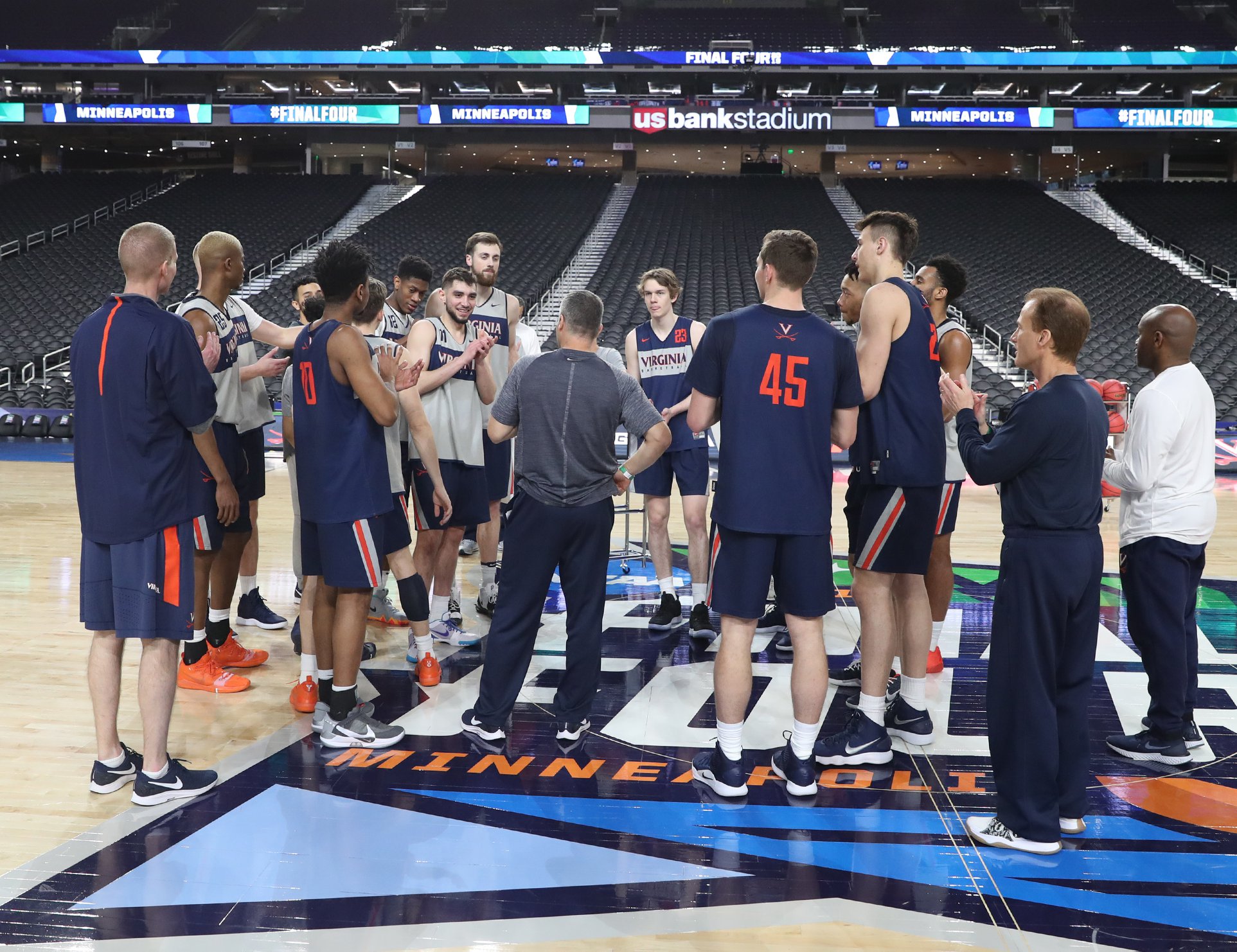Optimizing Athletic Performance
 Going the distance to the Final Four takes stamina and optimal performance. In considering training strategies, Arthur Weltman shares his study of elite basketball players: “Noninvasive Assessment of Internal and External Player Load: Implications for Optimizing Athletic Performance.” Mr. Weltman is Professor and Chair, Department of Kinesiology in the Curry School of Education and Human Development; Professor, Department of Medicine; and Director, Exercise Physiology Core Laboratory at the University of Virginia.
Going the distance to the Final Four takes stamina and optimal performance. In considering training strategies, Arthur Weltman shares his study of elite basketball players: “Noninvasive Assessment of Internal and External Player Load: Implications for Optimizing Athletic Performance.” Mr. Weltman is Professor and Chair, Department of Kinesiology in the Curry School of Education and Human Development; Professor, Department of Medicine; and Director, Exercise Physiology Core Laboratory at the University of Virginia.
The following excerpts are from the article “Noninvasive Assessment of Internal and External Player Load: Implications for Optimizing Athletic Performance” by Aaron D. Heishman, Michael A. Curtis, Ethan Saliba, Robert J. Hornett, Steven K. Malin, and Arthur L. Weltman; The Journal of Strength and Conditioning, Volume 32, Number 5, May 2018. To read the complete study, including methods, results, and practical applications, click here.
INTRODUCTION
Managing optimal performance in elite athletes is difficult. Recent advances in athlete tracking and monitoring technology allow for the assessment of fatigue before and during practice and may promote the development of training strategies to optimize performance (11,12,17,34). Fatigue can be defined as the reduction in the ability of muscles to perform work resulting in a decrement in performance (2,28,42). This decline in performance over time has been associated with the observation that some athletes perform frequent multidimensional low-frequency fatigue (LFF) activities that are characterized by high-intensity, moderate-to-high force repetitive eccentric or stretch-shortening cycle contractions (10,22,24). Identifying and quantifying LFF is important because elite athletes require aggressive training regimens comprising strategically induced fatigue to stimulate adaptation (10). Indeed, temporary decrements in performance generated by functional-overreaching results in supercompensation and enhanced performance (31). Thus, understanding an athlete’s position on the recovery-adaptation continuum is important for designing training programs that minimize the risk of maladaptation and improve performance readiness (12,31,45).
Readiness refers to the current functional state that determines the athlete’s ability to achieve their desired performance potential (32). Multiple strategies are used to track the biomechanical and physiologic stress by quantifying external load and internal stress levels of athletes (17,34). External load refers to the mechanical or locomotive stress generated by an athlete and is monitored by the use of wearable devices such as GPS (Global Positioning Systems) units and accelerometers (14,27,29,38,47). By contrast, internal stress describes the physiological stress associated with training and includes hormonal, immunological, and biochemical markers (1). Although these measures are valuable metrics for identifying levels of stress and fatigue, invasive tests are costly, time consuming, and impractical in the applied setting (16,17,35,42). This has led to the development of noninvasive strategies to evaluate stress (17,36,37,40,41,43).
(Introduction continued here)

METHODS
Experimental Approach to the Problem
As sports science data are routinely collected by the sports performance coaches at the University of Virginia, a retrospective analysis design was used to examine the effects of external player load and internal player readiness on performance. Data were collected over the 5 weeks of preseason training period just before the beginning of competitive season practice. During this timeframe, the NCAA allows for 8 hours per week of strength and conditioning activities (16 total sessions) and 2 hours per week of basketball-related activities. All basketball-related activities (e.g., skill development, practice etc.) were performed in the afternoon, whereas strength and conditioning sessions were performed either in the morning or afternoon based on facility availability and class schedules of the student athletes.

Subjects
Ten elite male NCAA Division 1 basketball players from a program ranked in the top 10 in the country (6 SD ag 20.9 6 1.2 years, height 188.0 6 7.9 cm, mass 100.8 6 9.2 kg, BMI 25.2 6 0.6 kg$m22, and body fat 10.3 6 2.2% [BodPod; Life Measurement Instruments, Concord, CA, USA]) were included in this study. Each athlete met individually with the Athletic Department Sport Nutritionist and was provided with nutrition guidelines designed to enhance performance. In addition, before each strength and conditioning session, each athlete was provided a drink that contained a combination of Gatorade, maltodextrin, and amino acids (amino acids included per athlete’s ability to purchase independently). Each drink varied between athletes based on the nutritional needs of the individual (determined by the Sport Nutritionist) but did not vary within an individual athlete. These drinks were consumed during the strength and conditioning sessions consistently after the Omegawave and countermovement jump assessments. After having the risks and benefits explained to them, participants provided informed written consent. The University of Virginia Institutional Review Board approved this retrospective study.
Read Mr. Weltman’s complete study, including methods, results, and practical applications.
- A Revolution in the Air: The Wright Brothers Take to the Sky on December 17, 1903
- Musings on National Violin Day
- Making the Promise Real: How a UN Tax Convention Can Fulfill the UNDHR’s Vision
- Livestream: A Conversation with Dr. Cornel West & Dr. Robert P. George
- UVA Club of Atlanta: Virtual Pilates Class
- UVA Club of Orange County: Hoos Coastal Walk